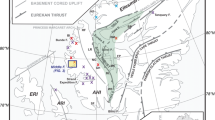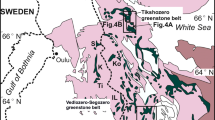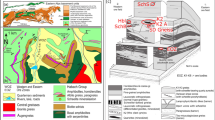Summary
Lithogeochemistry of komatiites can be useful in exploration for nickel sulfides in two distinct ways: indirectly, through identification of favourable volcanic environments, and more directly, through identification of signatures of crustal contamination and sulfide liquid segregation. However, the discrimination between mineralised and unmineralised sequences is not straightforward.
Komatiite chemistry is influenced by a variety of primary magmatic variables, overprinted to various degrees for various elements by the effects of metasomatic alteration. Once highly metasomatised samples have been filtered, primary magmatic signatures are largely retained for the elements Mg, Fe, Si, Al, Ti and Cr, even in cases of extensive CO2 metasomatism and talc-carbonate alteration. Incompatible trace elements such as Zr and REE are modified to some degree by alteration, particularly in cumulate rocks, but there is evidence for some retention of primary signatures.
Favourable volcanic environments, i.e. those containing large-volume lava pathways, can be identified on the basis of their distribution and ratios of whole rock Mg, Fe, Ni, Cr and Ti. Nickel depletion can be recognised in some cases of large mineralised systems where large volumes of sulfide formed at low silicate:sulfide (R) ratios, but is not effective in finding small high-grade ore shoots. PGE in low-S rocks do not appear to be an effective discriminant, owing to the local scale of S-saturation.
Crustal contamination is indicated in some mineralised suites on the basis of enriched ratios of strongly to weakly incompatible lithophile elements in fractionated lavas, but the effects of alteration are significant and may be misleading. On the whole, mineralised sequences tend to have more enriched signatures than unmineralised ones, but there may be many false positives and negatives, and if the most CO2-metasomatised suites are discounted the contrast largely disappears. Overall, the presence of Ni-enriched sulfides is by far the best lithogeochemical indicator there is, and it may be the only really effective one.
Similar content being viewed by others
Author information
Authors and Affiliations
Rights and permissions
About this article
Cite this article
Barnes, S., Hill, R., Perring, C. et al. Lithogeochemical exploration for komatiite-associated Ni-sulfide deposits: strategies and limitations. Mineralogy and Petrology 82, 259–293 (2004). https://doi.org/10.1007/s00710-004-0051-7
Received:
Accepted:
Issue Date:
DOI: https://doi.org/10.1007/s00710-004-0051-7




